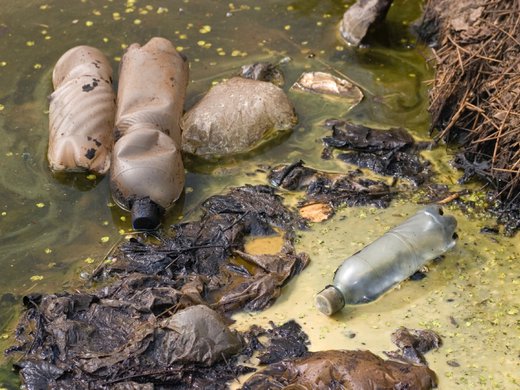Canadian social policies directed towards Aboriginal (First Nation, Metis and Inuit) populations have largely been developed outside of a historical, cultural framework, providing a long standing demonstration of the role of policy as a centralized mechanism of social control. Little attention has been given to the specific cultures of diverse Aboriginal communities in the design and administration of policies which are administered across Canada. Aboriginal peoples have, historically, been collectively addressed in federal policies as “the Indian Problem,” rather than recognized and addressed, as they expected, as sovereign peoples with distinct cultures.
Indigenous peoples endured formidable hardships. Their populations were decimated by the introduction of old world diseases such as small pox, typhus and influenza. The demographically weakened and political marginalized Canadian Aboriginal population was further affected by national social policy. The government introduced a series of political and administrative measures designed to undercut Indigenous cultural survival, including the criminalization of spiritual and cultural practices, forced re-location, the implementation of assimilation policies which interfered with local governance, and punitive forms of enfranchisement (involving the loss of official standing as a status Indian).
In 1867, the emerging nation of Canada assumed jurisdiction over Aboriginal peoples and their lands from the British Crown through the British North American Act. The Indian Affairs Department, for many decades a comparatively small and marginal administrative unit, managed the affairs of all status Indians (First Nations) and their communities. By the 1880s, the Department had launched policies of assimilation. The residential school policy established in that decade — one of the most egregious strategies of assimilation — focusing on the education and training of First Nations children. By some estimates, as many as one quarter of the students died while at the schools. In the years following the introduction of residential schools, further assimilation policies were introduced. These attacked important spiritual and cultural ceremonies, such as the Potlatch (1884) and the Sun Dance (1886). Government documents make explicit the government’s assimilative aims to remove and replace cultural practices and identity. The often quoted Duncan Campbell Scott, Deputy Superintendent of Indian Affairs, 1913-1932, who wrote, "I want to get rid of the Indian problem... Our object is to continue until there is not a single Indian in Canada that has not been absorbed into the body politic and there is no Indian question, and no Indian Department, that is the whole object of the Bill" (Campbell Scott, 1920). According to Canada’s leading historian of government Aboriginal policies, J.R. Miller, the Canadian government "legally infantalized and politically patronized" Aboriginal peoples and subjected their cultures, communities, families and individuals to an unrelenting "vicious assimilative assault" (Miller, 2004, pp. 102 & 251). Many decades passed before the Government of Canada realized and acknowledged that these policies were fundamentally flawed and highly destructive of Indigenous peoples and cultures.
The government apologies of Australia and Canada, given in February and June 2008 respectively, are important political and social acknowledgements of wrong doing. They also represent a moral and political awakening to the devastating and long term impacts of cultural interference through centralized state policies. Following the apology of the Australian Prime Minister, the Prime Minister of Canada provided an apology for the Indian residential schools, acknowledging the wrong doing of the assimilative policy which enforced the separation of 150,000 very young children, in 132 church-run, government financed schools, from their parents, families, communities and cultures. The apology confirmed the political and institutionalized nature of the collective assault against Aboriginal children, families, communities and Nations. Prime Minister Harper stated that the two primary objectives of the Indian Residential School system were to, “… remove and isolate children from the influence of their homes, families, traditions and cultures … to kill the Indian in the child" and to “assimilate them into the dominant culture” (2008).
Today there are over a million Aboriginal peoples in Canada, representing 3.8% of the total population comprised of three distinct groups: First Nations, Metis, and Inuit. These statistics, however, misrepresent the importance and visibility of Aboriginal people and their essential presence within the Canadian socio political landscape. While the largest number of Aboriginal people reside in the most densely populated province of Ontario, where they represent only 2% of the total population, it is significant to note that Aboriginal people represents 25%-85% of the population in the three northern territories. For example, 85% of the population in Nunavut; the comparable number for the Northwest Territories is 50% and 25% in the Yukon populations. Fifteen percent of the populations of the provinces of Manitoba and Saskatchewan are also First Nations. Across the provincial Norths, Aboriginal people dominate many communities and much of the northern population. The First peoples of Canada are therefore a very important and visible aspect of Canadian communities with vital roles to play in the future of Canada.
Aboriginal youth have emerged as a crucial voice in the future of Indigenous people in Canada. There is an urgent need to engage them in the social policy and governance issues that affect them; and to connect Canadian Indigenous youth with their counterparts around the world. The Canadian Aboriginal population is growing much faster than the national population, having increased by more than 50% since the 1996 population census. Significantly, more than half the Aboriginal population is younger than 25. These are exciting and important times for Indigenous Canadians. With national apologies to Indigenous peoples and global consensus documents such as the UNDRIP, an international rights framework, emerging for Indigenous populations. It will fall to emerging youth leaders to assess social policies and to inform global governance practices in the coming decades. The Canadian situation is mirrored among Indigenous peoples around the world. It is, therefore, a global challenge to educate all people about the history of Indigenous-newcomer relations, to ensure that they have the resources and authority to cope with personal and collective challenges, and to understand the global nature of the challenges and opportunities that arise from the development of Indigenous rights and Indigenous globalization.


